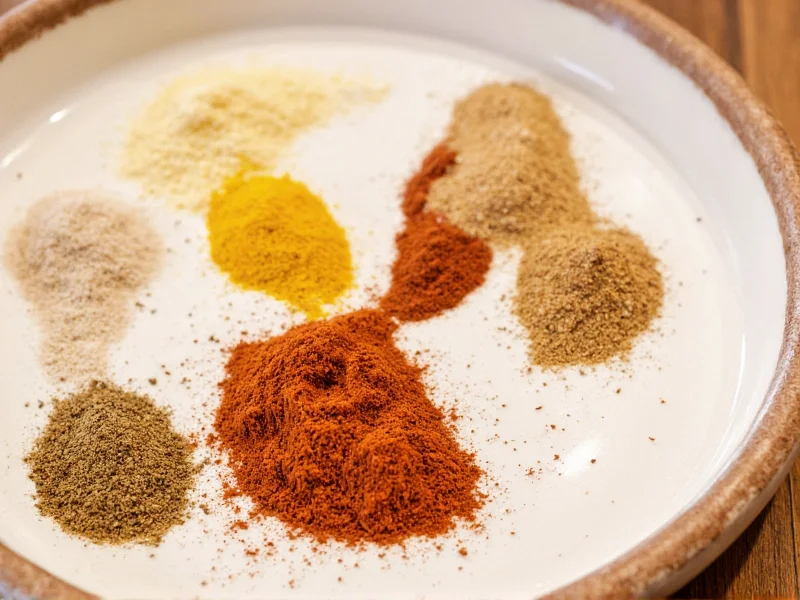Corn on the cob transforms from simple summer staple to culinary delight with the right seasoning. Whether you're grilling at a backyard barbecue or preparing a weeknight dinner, understanding spice pairings elevates this classic side dish. This guide explores scientifically backed flavor combinations that enhance corn's natural sweetness while introducing exciting new dimensions to your meals.
Why Spices Matter for Corn on the Cob
Corn contains natural sugars that caramelize when cooked, creating complex flavor compounds. The right spices interact with these compounds through the Maillard reaction, producing richer taste experiences. Food science shows that fat-soluble spices like paprika and cumin adhere better to corn when combined with butter or oil, while acid-based seasonings like lime juice help balance corn's natural sweetness.
Classic Corn Seasoning Combinations
Traditional butter and salt remains popular for good reason—salt enhances corn's natural flavor while butter carries fat-soluble flavor compounds. But modern palates crave variety without compromising corn's inherent deliciousness. Consider these expert-recommended combinations:
| Spice Blend | Ingredients | Best Cooking Method |
|---|---|---|
| Classic Butter Blend | 4 tbsp butter, 1 tsp sea salt, 1/4 tsp black pepper | Grilled or boiled |
| Chili-Lime Kick | 3 tbsp mayo, 2 tbsp cotija cheese, 1 tsp chili powder, 1 lime (juiced) | Grilled |
| Garlic-Herb Medley | 3 tbsp olive oil, 2 minced garlic cloves, 1 tbsp chopped parsley, 1 tsp thyme | Grilled or roasted |
| Smoky Paprika Mix | 2 tbsp melted butter, 1 tsp smoked paprika, 1/2 tsp garlic powder, 1/4 tsp cayenne | Grilled |
International Corn Seasoning Traditions
Cultures worldwide have developed distinctive corn seasoning approaches that reflect local ingredients and culinary traditions. Exploring these global variations introduces exciting new dimensions to your corn experience:
- Mexican Elote: Street vendors coat grilled corn with mayonnaise, cotija cheese, chili powder, and lime juice. This combination creates the perfect balance of creamy, salty, spicy, and acidic elements that complement corn's natural sweetness.
- Japanese Style: Shio kombu (salted kelp) provides umami depth without overpowering corn's delicate flavor. Simply brush corn with melted butter and sprinkle with shio kombu after cooking.
- Middle Eastern Za'atar: This herb blend of thyme, sumac, and sesame seeds adds earthy notes. Mix with olive oil before applying to warm corn for maximum flavor absorption.
- Indian Spiced Corn: Toss cooked corn with melted ghee, chaat masala, and fresh cilantro for a tangy, aromatic experience popular at Indian street food stalls.
Health-Conscious Seasoning Alternatives
For those monitoring sodium intake or following specific dietary patterns, numerous flavorful alternatives exist:
- Vegan Butter Substitute: Combine 3 tbsp olive oil with 1 tsp nutritional yeast for cheesy flavor without dairy. Add garlic powder and fresh herbs for complexity.
- Low-Sodium Option: Use lemon zest, black pepper, and fresh dill instead of salt. The citrus brightens corn's natural sweetness while herbs provide aromatic complexity.
- Spicy Metabolism Boost: Cayenne pepper mixed with olive oil creates capsaicin-rich seasoning that may temporarily increase metabolism while adding exciting heat.
- Herb-Infused Oil: Steep fresh rosemary, thyme, or basil in warm olive oil for 30 minutes, then brush over cooked corn for subtle, sophisticated flavor.
Proper Application Techniques
How you apply seasoning significantly impacts flavor distribution and adherence. Follow these professional techniques:
- Temperature Matters: Apply seasonings immediately after cooking while corn is still warm (but not scalding hot) to maximize absorption.
- Base Layer First: Always start with a thin layer of fat (butter, olive oil, or mayo) to help dry spices adhere and carry flavor compounds.
- Layering Approach: Apply seasonings in stages—first fat base, then dry spices, followed by fresh herbs or cheese for dimensional flavor.
- Rolling Method: Place corn on its side and roll through seasoning rather than sprinkling from above for even coverage.
- Resting Period: Allow seasoned corn to rest 2-3 minutes before serving to let flavors meld and penetrate the kernels.
Seasonal Pairing Suggestions
Match your corn seasoning to the season for harmonious meal planning:
- Summer: Lighter seasonings like lemon-herb blends or fresh chili-lime combinations complement seasonal produce and outdoor cooking.
- Fall: Earthy spices like smoked paprika, cumin, or pumpkin pie spice (yes, really!) pair well with autumn harvest flavors.
- Winter: Richer seasonings with roasted garlic, truffle salt, or parmesan create comforting side dishes for holiday meals.
- Spring: Bright, fresh combinations with dill, chives, and lemon zest mirror seasonal renewal and lighter cooking styles.
Troubleshooting Common Seasoning Issues
Even experienced cooks encounter challenges when seasoning corn. Here's how to solve frequent problems:
- Seasoning Falls Off: Ensure corn is properly dried after cooking and apply a sufficient fat base before adding dry spices.
- Overpowering Flavor: Start with less seasoning than you think you need—you can always add more but can't remove excess.
- Uneven Distribution: Roll corn through seasoning rather than sprinkling, or use tongs to rotate corn while brushing with seasoned oil.
- Seasoning Burns: Apply delicate herbs and citrus after cooking, not during high-heat grilling.











 浙公网安备
33010002000092号
浙公网安备
33010002000092号 浙B2-20120091-4
浙B2-20120091-4